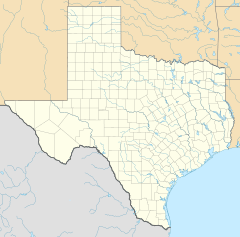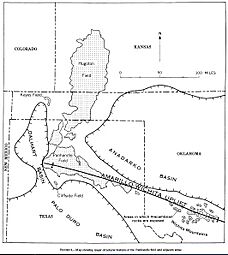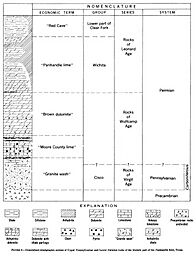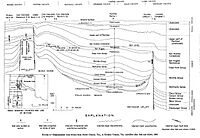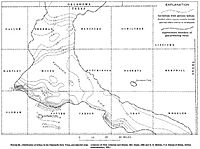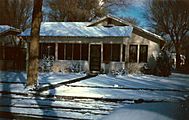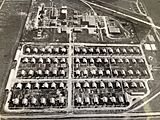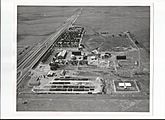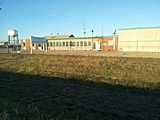Masterson, Texas facts for kids
Quick facts for kids
Masterson
|
|
|---|---|
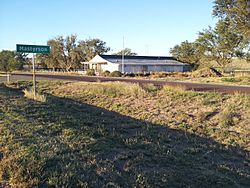
The Masterson Post Office was located in the Exell General Store. The building in 2013.
|
|
| Country | |
| State | |
| County | Moore |
| Elevation | 3,704 ft (1,129 m) |
| Time zone | UTC-6 (Central (CST)) |
| • Summer (DST) | UTC-5 (CDT) |
| ZIP codes |
79058
|
| GNIS feature ID | 1362269 |
Masterson is a small, unincorporated community in Moore County, Texas, in the Texas Panhandle. An unincorporated community means it's a place with a shared identity, but it doesn't have its own local government like a city or town. It's located along U.S. Routes 87 and 287, just south of Dumas.
Masterson was created in 1927. It was built to support the Canadian River Gas plant and its natural gas pipelines. These were part of the huge Panhandle Field. The community was named after Robert Masterson, a rancher. The gas plant was named Bivins Compressor Station, after another rancher, Lee Bivins.
At first, Masterson had 32 houses for families and a hotel for single workers. The Bivins Elementary School opened in 1937. It taught children up to eighth grade. After that, students went to school in Dumas.
In 1943, a special gas called helium started to be taken out of the natural gas at the nearby Exell Helium Plant. The government built 75 houses for the families of workers there. The Masterson post office opened in 1950 inside the Exell Store. Over the years, the gas plant changed owners several times. Starting in 1963, the company houses in both Bivins and Exell were slowly removed. The Bivins school closed in 1978.
The Panhandle Gas Field
The Panhandle Field is a very large area underground where natural gas, oil, and helium are found. It's like a giant natural trap for these resources. This area is surrounded by three large sedimentary basins. These basins are like huge bowls filled with layers of rock and soil.
Millions of years ago, the land here was pushed up, forming what are sometimes called the "Amarillo mountains" underground. Over time, these mountains were covered by layers of rock and sediment from the ocean. These layers now hold the gas, oil, and helium.
The helium found here comes from tiny amounts of radioactive rocks deep underground. The Panhandle Field has a slightly lower pressure than the areas around it. This allows gases to move into it and get trapped.
The Panhandle Field was discovered in 1918. A well called No. 1 Masterson C was drilled. It was about 2,395 feet deep. This well produced a lot of natural gas every day. Oil was discovered in the Panhandle Field a few years later, in 1921.
Charles N. Gould: A Geologist's Story
Charles N. Gould was a very important geologist. A geologist is a scientist who studies the Earth, including its rocks, soil, and history. He started the geology department at the University of Oklahoma in 1900.
In the early 1900s, Gould traveled through the Texas Panhandle. He studied the underground water resources. He also made geological maps of places like Palo Duro Canyon. He noticed signs of large underground domes, which are like upside-down bowls of rock. These domes can trap oil and gas.
In 1916, a businessman from Amarillo asked Gould if he knew of any places in the Panhandle that might have oil or gas. Gould believed there were several large domes there. He suggested making a detailed map of the area.
So, the Amarillo Oil Company was formed in 1917. They hired Gould to survey the land. His map showed a huge dome, about fifteen miles wide. Gould named it the John Ray Dome.
The company bought rights to drill for oil and gas on 64,000 acres around this dome. Gould was paid for his work. At that time, the closest oil or gas was 225 miles away. People weren't sure if they would find anything.
In December 1918, the company drilled its first well, called Masterson Number 1. It went down 2,200 feet. They found several layers with gas! The well produced a huge amount of gas every day. This was the start of the Panhandle Field.
Gould later found other important gas fields. He also named the buried granite ridge in the Panhandle the "Amarillo Mountains." Gould always said that looking for oil or gas was a gamble. He believed that geologists could only help reduce the risk of drilling.
Gallery


